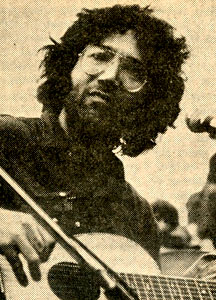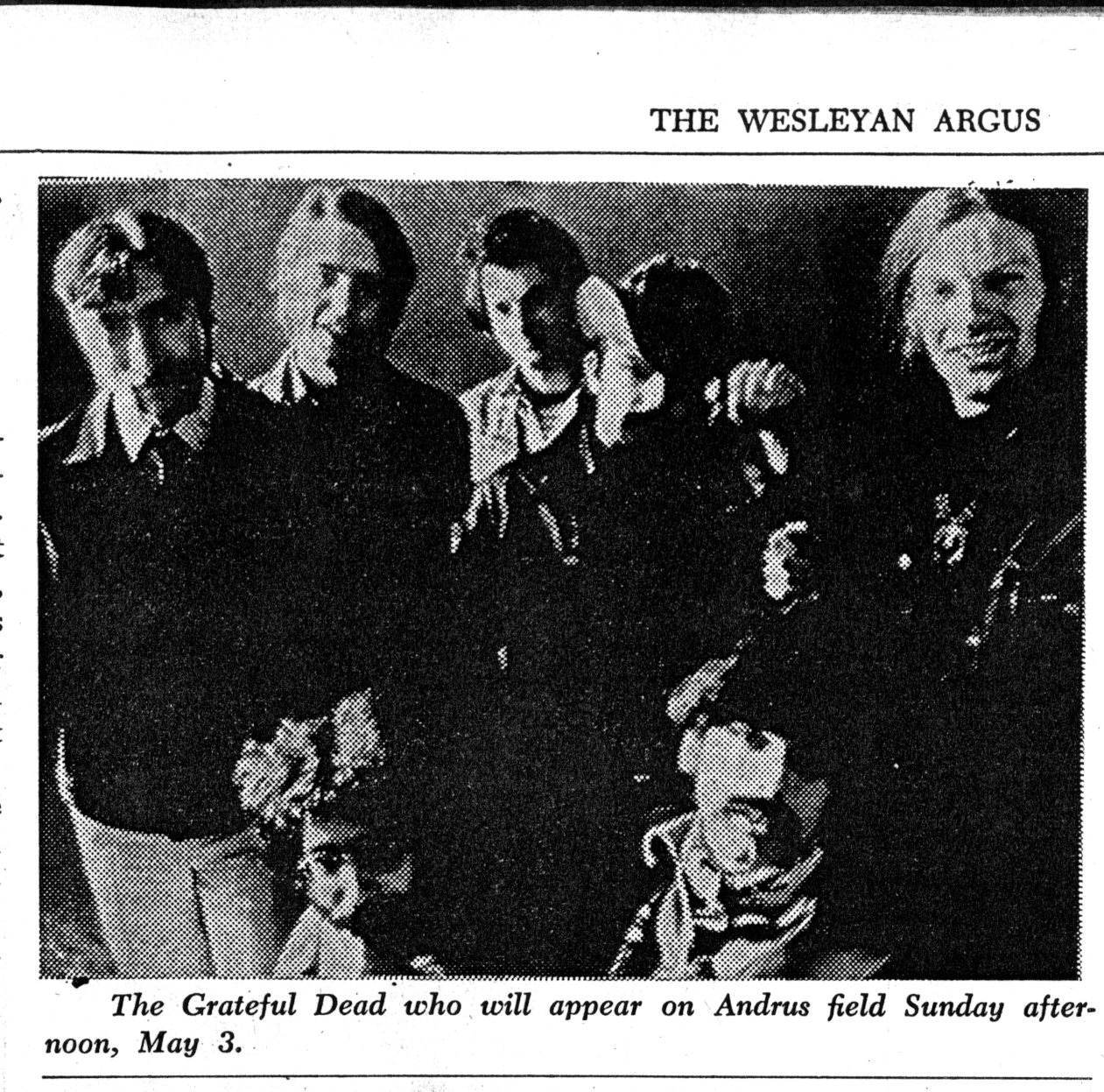HISTORICAL ROW

 A visit by the Grateful Dead, as memorable as it was, was only one of the happenings that together turned four days in spring 1970 into a microcosm of an era. During that short period of time, campus bombings, Black Panther Party rallies, and calls for a student strike also grabbed the attention of the university.
A visit by the Grateful Dead, as memorable as it was, was only one of the happenings that together turned four days in spring 1970 into a microcosm of an era. During that short period of time, campus bombings, Black Panther Party rallies, and calls for a student strike also grabbed the attention of the university.
The chronology begins in late 1969, when a friend of John Manchester ’72 took him to see the Dead at a club in Boston. John was mesmerized by the performance. It set him on a musical course that he followed professionally; he says that this one concert changed his life. But for our story, John will tell you matter-of-factly that after the two had seen the band, his friend “had gotten in touch with them and helped arrange for them to come to Wesleyan and play a free concert at the foot of Foss Hill.”
John’s friend must have acted pretty quickly, because planning for the concert was finalized in February. We don’t know when or how negotiations took place, but we do know that the Dead came to Wesleyan as part of their northeastern spring college tour. Toward the end of April, the Argus began reporting on the concert scheduled for May 3rd.
During the same time, a hugely controversial trial was about to take place in New Haven. Members of the Black Panther Party were accused of murder and sympathizers across the country did not believe black revolutionaries could get a fair trial, including a group of supporters who scheduled a rally at Wesleyan for the evening of Thursday, April 30th.
Early that morning, four fire bombs exploded, causing damage to Downey House, the Music Annex Building on William Street, and the Information Systems Building on Wyllys Avenue. No one offered a reason for the violence. The rally went on as planned. Students gathered in the old Alumni Athletic Building to hear John Froines, a member of the Chicago 7, and Doug Miranda, of the Black Panthers, encourage them to go to New Haven for what was planned to be a sizable rally.
On the same day, President Richard Nixon announced that he was escalating the Vietnam War by bombing targets in Cambodia. Already, American troops were on the ground there.
All this was front and center when a contingent of Wesleyan students went to New Haven on Friday, May 1st, for the May Day rally. It was reported that the crowd “soaked up the sunshine, listened to rock music and listened peacefully to angry speeches.” Some of the Wesleyan students attended a workshop calling for a national student strike.
The Grateful Dead would be coming to town in two days. Just how many people would show up for the concert was an open question. The Middletown Press and the Hartford Courant ran articles about it a day or two ahead, and some reports said it had been publicized on New York radio stations. Estimates varied from five thousand to fifty thousand concertgoers. University officials and student groups worked together to organize student marshals to provide security. The Middletown Police Department deployed all of its 84 officers for good measure.
None of the security was necessary. The concert drew about 3,500 people. There were no arrests. One newspaper article described the crowd assembled to hear the Grateful Dead—“a well-known combo liked by the younger set”—as “well-behaved.” The Middletown Press called it the day “Wesleyan University finally turned on,” observing, “There were a few announcements about the national student strike; there were some angry references to Cambodia; but crowd reaction was low keyed. People seemed more intent on listening to the music.”
The next day, Monday, May 4th, National Guardsmen opened fire on student protesters at Kent State University in Ohio, killing four. Even today, when people who know about the Grateful Dead concert talk about it, they frequently associate it with Kent State. On that Monday, Wesleyan students voted to strike in solidarity with millions across the country. The faculty followed suit. Classes were canceled for the rest of the semester.
The University Archives welcomes alumni, faculty, students, and visiting scholars researching the Grateful Dead or any aspect of Wesleyan’s history.
